04/012/2012
About an internal exposure.
The soil sampling test result of the newest Tokyo that Mr. GanderSeng performed
About the result to which Mr. GanderSeng carried out the sampling inspection of five metropolitan areas
until now, probably, for the Japanese, the nuclear specialist and Mr. Ernie GanderSeng who can trust it most visited Japan in February, this year, and they held a press conference which served as the exhibition of the first nuclear power plant [ of its-new-work Fukushima ] truth, and a view (Shueisha pocketbook) in Nippon Kisha Club of inner Saiwai-cho from now on.
As for the Japanese nuclear power plant regulatory agency(Hoanin), although the Takashi Hirose x GanderSeng talk was also realized and it was then taken up by the weekly magazine, it was only slight that indifference and mass media also took this up as usual.
Mr. GanderSeng extracted the sample of soil from five in the chip box of a visit to Japan, and Tokyo, and he had sent to the research institute in the United States.
In the United States, high concentration contamination was carried out, so that it was dealt with as radioactive waste, and those soil samples had to be transported to the disposal plant in Texas from the research institute for the final disposal.
This is the actual condition of the radioactive contamination of this capital and Tokyo.
This animation mixes an image when Mr. GanderSeng participates in the lecture meeting on the occasion of the regulation information meeting of the U.S. and the Nuclear Regulatory Commission (NRC) held in Washington, D.C. over March 13 to 15 days, and is edited.
Chair Yatsko who speaks over March 13 to 15 days in the U.S. and the Nuclear Regulatory Commission (NRC) held in Washington, D.C.
The following extracts the portion of Tokyo by Mr. Gander Seng in this animation soil sampling test result reporting.
The soil sample extracted in Tokyo is a thing of the level dealt with as nuclear waste in the United States.
Tokyo Soil Samples Would Be Considered Nuclear Waste In The US
It will be ↓ if it sees by youtube.
Tokyo Soil Samples Would Be Considered Nuclear Waste In The US
They are the whole contents.
: (Mr. GanderSeng)
Several weeks ago, Ernie GanderSeng of Fairewinds performed sample extraction of the ground in the public children's park in Tokyo, the rooftop garden of the building, etc., while traveling Japan.
If these are found in this United States, they will be made into radioactive waste.
However, contamination of this level is discovered across Japan.
Over March 13 to 15 days, at the regulation information meeting of the U.S. and the Nuclear Regulatory Commission (NRC) held in Washington, D.C. the chairperson of NRC and Dr. Gregory Yatsko, NRC and the nuclear power industry which have given permission once to the nuclear power plant expressed that it had concern strongly about for the moment taking into consideration about neither the cost of people's mass evacuation, nor the radioactive contamination in cost-effectiveness analysis.
It is considered that it will become impossible for the cost which withdraws Fairewinds from near the nuclear power plant in the United States (when a nuclear power plant disaster happens) to go over it and reside in numbers of generations once it exceeds 1 trillion dollars and soil is polluted.
It is [making the following into the character from 01:45 of the animation].
Ernie GanderSeng:
I was in Tokyo several weeks ago.
Then, although I took the sample of the ground, especially the highest place of radiation was not necessarily looked for.
I had five plastic bags for soil extraction, I walked with here and there, and the surroundings dipped up mud at each place, and I put into the plastic bag.
One is taken from the crack of a sidewalk.
(Capture picture) ↓
One [ another ] was taken from the children's park decontaminated before.
(Capture picture) ↓
Moreover, another extracts wayside moss.
(Capture picture) ↓
Furthermore, it takes from the roof of the office building in which I was present.
(Capture picture) ↓
The last is extracted from the place of the side opposite to across the road of the place in which the buildings of the judicial relation in the downtown in Tokyo(it's Tokyo District Court, Kasumigaseki. it' vicinity of 300 meters north from Imperial Hotel)have gathered.
(Capture picture) ↓
After I brought those soil samples home and notified the customs duty, I sent to the research institute (United States).
Since all those samples were dealt with as radioactive waste in this United States, that research institute decided to send to Texas, in order to process this.
Please consider that in Tokyo and consider the state of that and the intricately complicated capital in the United States.
I would like whether to go to gather a flower and to attach a knee in radioactive waste.
Now, it is the actual thing which has happened in Tokyo.
I regard just it as whether probably it is the point which Chair Yatsko pointed out.
When NRC conducts cost-effectiveness analysis, the social cost is not put into calculation for numbers of generations about it being obliged to refuge or probably people of a 100,000 people unit being made to transfer forever.
It is separated hundreds of miles of between us who are present in here Washington, D.C., and many of nuclear power plants.
No less than about 200 miles of Fukushima are separated from Tokyo.
Nevertheless, when I am in Tokyo, the soil taken from the place which he was not necessarily conscious of in particular, and was found by chance is treated as radioactive waste here in the United States.
Supposing the capital of our country is hit by comparable contamination, what do you think?
Therefore, whether when an accident occurs once, what happens in a new nuclear power plant and the old nuclear power plant which is receiving reconfirmation C, and when analyzing, it consents to the idea of Chair Yatsko that required cost should be taken into consideration, as that we have got up in Tokyo or whole Japan is teaching.
(that's all)
04/012/2012
ガンダーセン氏の放射能汚染調査。
・渋谷地区 11,260Bq/kg
・霞が関の地裁。(日比谷公園の隣り) 1,556 Bq/kg
内部被曝について。
ガンダーセン氏の行った最新の東京の土壌サンプリング検査結果
ガンダーセン氏が、都内5ヵ所のサンプリング検査を行った結果について
今までも、おそらくこれからも、日本人にとって、もっとも信頼できる原子力専門家、アーニー・ガンダーセン氏が今年の2月に来日して、内幸町の日本記者クラブで新著福島第一原発 ―真相と展望 (集英社新書)の発表会を兼ねた記者会見を行いました。
そのときに、広瀬隆×ガンダーセン対談も実現し、週刊誌に取り上げられましたが、日本の原発規制当局(保安院)は、相変わらず無関心、マスコミも、これを取り上げたのはほんのわずかでした。
ガンダーセン氏は、来日の折、東京都内の5ヵ所から土壌のサンプルを採取して、アメリカの研究所に送っていたのです。
アメリカでは、それらの土壌サンプルは、放射性廃棄物として取り扱われるほど高濃度汚染されたもので、最終処理のために、その研究所から、さらにテキサスの処理場に移送しなければならなかったのです。
これが、この首都・東京の放射能汚染の実態です。
この動画は、ガンダーセン氏が、3月13~15日にわたって、ワシントンD.C.で開かれた米・原子力規制委員会(NRC)の規制情報会議の際に行われた講演会に参加したときの映像をまじえて、編集されたものです。
3月13~15日にわたって、ワシントンD.C.で開かれた米・原子力規制委員会(NRC)で、発言するヤツコ議長。
以下は、この動画の中の、ガンダーセン氏による東京での土壌サンプリング検査結果報告の部分を抜粋したものです。
東京で採取した土壌サンプルは、アメリカでは核廃棄物として取り扱われるレベルのものです
Tokyo Soil Samples Would Be Considered Nuclear Waste In The US
youtubeで観るなら↓
Tokyo Soil Samples Would Be Considered Nuclear Waste In The US
全体の内容です。:(ガンダーセン氏)
Fairewindsのアーニー・ガンダーセンは、数週間前、日本を旅行している間に、東京の公立の児童公園や、ビルの屋上庭園などで土のサンプル採取を行いました。
もし、これらが、このアメリカで見つかれば、放射性廃棄物とされるでしよう。
しかし、この程度の汚染は、日本のいたるところで発見されているのです。
3月13~15日にわたって、ワシントンD.C.で開かれた米・原子力規制委員会(NRC)の規制情報会議で、NRCの議長、グレゴリー・ヤツコ博士は、かつて原子力発電所に許可を与えてきたNRCと原子力産業が、人々の大量疎開のコストや、費用効果分析における放射能汚染について、今のところ考慮していないことについて強く懸念を持っていると表明しました。
Fairewindsは、(原発事故が起こった場合)アメリカの原子力発電所付近から撤退するコストは、ゆうに1兆ドルを超え、いったん土壌が汚染されれば、何世代にもわたって、居住できなくなると考えています。
〔以下は、動画の01:45から文字にしています〕
アーニー・ガンダーセン:
数週間前、私は東京にいました。
そこで私は土のサンプルを取ったのですが、その時に、特に放射線のもっとも高い場所を探したわけではありません。
私は土壌採取用のビニール袋を5つ持って、あちらこちらと歩き回り、それぞれの場所で泥をすくい上げ、ビニール袋に入れました。
ひとつは、歩道の割れ目から取ったものです。(キャプチャー画像)↓
別のひとつは、以前に除染された児童公園から取ったものでした。(キャプチャー画像)↓
また、もうひとつは、道端のコケを採取。(キャプチャー画像)↓
さらに、私がいたオフィスビルの屋上から取ったものです。(キャプチャー画像)↓
最後は、東京のダウンタウンにある司法関係の建物が集っている場所の道路を挟んで反対側の場所から採取したものです。(キャプチャー画像)↓(帝国ホテルから日比谷公園を挟んでの東京地裁の vicinity です)
私は、それらの土壌サンプルを持ち帰り、関税に申告した後、(アメリカの)研究所に送りました。
その研究所は、それらのサンプル全部が、このアメリカでは放射性廃棄物として取り扱われるので、これを処理するためにテキサスに送ることを決めたのです。
東京であれ、アメリカであれ、複雑に入り組んだ首都の状態を考えてみてください。
花を摘みに行って、放射性廃棄物の中で膝をつきたいなんて思いますか?
今、それが東京で起こっている現実なのです。
それこそ、ヤツコ議長が指摘したポイントであろうかと思います。
NRCが費用効果分析を行う場合、何世代もの間、避難を余儀なくされたり、10万人単位の人々が、おそらく永遠に移転させられたりすることについて、その社会的なコストを勘定に入れていないのです。
ここワシントンD.C.にいる私たちと、多くの原子力発電所との間は、数百マイルも離れています。
福島は、東京から、ほぼ200マイルも離れています。
にもかかわらず、私が東京にいたとき、特に意識したわけでもなく偶然に見つけた場所から取った土壌は、ここアメリカでは放射性廃棄物として扱われているのです。
もし、私たちの国の首都が同程度の汚染に見舞われたとしたら、どう思うでしょう。
従って、私たちが東京や日本全体で起きていることから学んでいるように、新しい原子力発電所や、再認可を受けつつある古い原子力発電所で、ひとたび事故が起きたときにどうなるか分析する際には、必要なコストを考慮すべきだ、というヤツコ議長の考えに賛同します。
(that's all)
This is a result of five soil sampling inspections which come out the 02:47 neighborhood of an animation.
An extraction place in the city of Tokyo is - Shibuya area.
- kamakura (it seems to be a children's park and a wooden hollow)
- The children's park of Chiyoda-ku
- The building roof in Chiyoda
- Hibiya Park
They are five.
The bottom is what expanded the result.
Furthermore, what was expanded is the bottom.
pCi/g It is the quantity of the radioactivity contained in the soil 1g.
By a becquerel conversion type
It is as follows, if the cesium 134 and cesium 137 are totaled (Co60 is disregarded here) and it changes to 1 kg of soil, since 1 Bq is set to = 2.703E?11Ci = 27.0E12Ci = 27.0pCi.
- Shibuya area
11,260 Bq/kg-kamakura.
Children's park of 1,333Bq/kg and Chiyoda-ku 2,111Bq/kg
- The building roof of Chiyoda-ku 3,481Bq/kg and Hibiya Park 1,556 Bq/kg
Since the highest value in Tokyo is not less than 20,000Bq/kg of Mizumoto Park of Katsushika-ku, the value of 11,260Bq/kg of the Shibuya area is a quite dangerous level.
Probably, more than this and a high spot are hidden by various places of not only Tokyo but a local city since especially Mr. Gander Seng says that chose the place where a dose seems to be high and he did not necessarily sample it.
Tokyo is intricately complex at the place where a building, an alley, etc. are narrow.
There is a thin passage along which a wind does not pass here and there, or if it rains, it will be decided and a puddle will be made, or there are many complicated and mysterious places.
Such a place is "a dead angle of radioactivity" also for the citizen who has a Geiger counter and is measuring the neighborhood.
the case where it is the super-micro hot spot by which high concentration contamination was carried out more than imagination -- danger -- probably, it will be supreme.
It seems that however, the fact of a dose of several places of Tokyo Station is quite high.
If this is Ueno Station called "northeastern vestibule leading to the outside", how is it?
It seems that moreover, a super-micro hot spot which exceeds 10,000 Bq is hidden anywhere in in the center of Tokyo.
Like yesterday, when a strong wind blows violently, it needs to be truly careful of expiration contamination.
Although it cannot but judge from geographical feature, the form of a building, etc., it is sure that "the bad place of drainage" says that it is dangerous in urban intricately complicated shopping quarter like especially Tokyo to be able to say at least.
The place (11,260Bq/kg spot) which Mr. GanderSeng sampled in Shibuya is a place through which grass is planted and water does not flow.
It is a place whose moisture is not lost besides sinking into the ground over many hours, or evaporating.
I hear that in this case, it is being rapidly condensed steadily with lapse of the time.
For example, the following places of a bridge will be that the radioactive material flowed in the road for one year whenever it rained several times under a building under a roof.
However, in the seasons when it rains intensively, such as the rainy season and a season of a typhoon, the radioactive material hidden without being passed yet may flow out.
It will be that the snowdrift near it, a flower bed, etc. are condensed.
And if a season comes like summer so that soil may dry to Caracalla, dust is likely to soar from there and it is likely to become a source of new radioactive particles.
The sample of the soil which Mr. Gander Seng extracted in Tokyo was sent to the nuclear waste disposal plant in Texas, and was processed.
Even if a dose with a Tokyoite high from the puddle under the launching platform of the bottom of a drainspout and a children's park, the crevice between the cracks of a carport, and other various places is discovered, decontamination of such a super-mini micro spot, etc. do not do a public office one by one.
Then, there is also no place into which it is thrown away in comfort by itself in the place which took the dangerous ground or shaved off moss by which radioactivity is condensed.
Will you become silent and will throw away into the dry river bed in Tama River?
If a child plays there, he will be contaminated.
Such a thing is not made.
Tokyo cannot be said to be a civilization city at such a point.
Depending on a place, the way of an Amazon's jungle may be safety.
The present Noda government is an outlaw regime in which morals collapsed completely.
Probably, advanced nations did not have such the government in recent years.
although it will not become if it comes to change into the honest government by our power -- till then -- such a super-micro hot spot -- let sleeping dogs lie -- it comes out and goes -- it does not spread.
It is necessary to notice anyhow the flower bed the spot that a back alley from now on and the bad place of drainage and locally strong wind blowing along a street of very tall buildings whirl around, and near the exhaust port, etc. about "snowdrift."
It seems that the place condensed so that may be different somehow is increasingly condensed although it considered that such a place also blew away by a wind soon.
It is [ present us / for ] important to read geographical feature above all.
A handkerchief closes a mouth, and I would like to be quick and to do a thing to the extent that it goes past , when sensing saying "This snowdrift is doubtful."
これは、動画の02:47辺りに出てくる5つの土壌サンプリング検査の結果です。
都内の採取場所は、
・渋谷地区
・kamakura (児童公園、木のくぼみのようです)
・千代田区の児童公園
・千代田のビル屋上
・日比谷公園
の5ヵ所となっています。
下は、結果を拡大したもの。
さらに拡大したものが下。
pCi/g とは、土壌1g中に含まれる放射能の量のことです。
ベクレル換算式では
1Bq = 2.703E-11Ci = 27.0E-12Ci = 27.0pCi
となるので、セシウム134とセシウム137を合計(Co60は、ここでは無視)して、土壌1kgになおすと、以下のようになります。
・渋谷地区 11,260Bq/kg
・kamakura 1,333Bq/kg
・千代田区の児童公園 2,111Bq/kg
・千代田区のビル屋上 3,481Bq/kg
・東京地裁.日比谷公園 1,556 Bq/kg
東京都でもっとも高い値が、葛飾区の水元公園の20,000Bq/kg以上ですから、渋谷地区の11,260Bq/kgという値は、かなり危険なレベルです。
ガンダーセン氏は、特に線量の高そうなところを選んでサンプリングしたわけではないと言いますから、これ以上、高いスポットは、東京に限らず地方都市のいろいろなところに隠れているのでしょう。
東京は、建物や路地などが狭い場所に複雑に入り組んでいます。
あちこちに風の通らない細い通路があったり、雨が降ると、決まって水溜りができたり、複雑怪奇な場所がたくさんあります。
こうした場所は、ガイガーカウンターを持って近所を計測している市民にとっても「放射能の死角」になっているのです。
それが、想像以上に高濃度汚染された、超マイクロ・ホットスポットである場合は危険この上ないでしょう。
しかし、東京駅の何ヵ所かは、かなり線量が高いのは事実のようです。
これが、「東北の玄関口」と言われる上野駅なら、どうでしょう。
また、1万ベクレルを超えるような超マイクロ・ホットスポットは、都心のどこにでも隠れているようです。
昨日のように、強風が吹き荒れるときは、呼気被曝は本当に注意する必要があります。
都会の、特に東京のような複雑に入り組んだ繁華街では、地形や建物の形などから判断するしかないのですが、少なくとも言えることは、「水はけの悪い場所」が危険と言うことは確実です。
ガンダーセン氏が渋谷でサンプリングした場所(11,260Bq/kgのスポット)は、草が植わっていて水が流れない場所です。時間をかけて土に滲みこんでいくか、蒸発する以外に水分がなくならないような場所です。
この場合は、時の経過とともに、どんどん濃縮されていく一方だということです。
たとえば屋根の下、ビルの下、橋の下のような場所は、この1年、何度か雨が降るたびに路上に放射性物質が流れていったことでしょう。
しかし、梅雨時や台風の季節など、雨が集中的に降るような季節では、まだ流されずに隠れていた放射性物質が流れ出してくる可能性があります。
その近くの吹き溜まりや、花壇などは濃縮されていく、ということでしょう。
そして、夏のように、カラカラに土壌が乾燥するように季節になれば、そこから土埃が舞い上がって、新たな放射性粒子の発生源になりそうです。
ガンダーセン氏が、東京都内で採取した土壌のサンプルは、テキサスの核廃棄物処理場に送られて処理されました。
都民が、雨どいの下、児童公園の滑り台下の水溜り、カーポートのひび割れの隙間、その他、いろいろな場所から高い線量が発見されても、役所は、いちいち、そんな超ミニ・マイクロスポットの除染などやってくれません。
それではと、自分で、危険な土を取ったり、放射能が濃縮されているコケを削り取ったところで、それを安心して棄てる場所もありません。
黙って、多摩川の河原に棄ててしまいますか?
子供が、そこで遊んだら被曝してしまいます。そんなことは、できません。
東京は、そうした点では文明都市とは言えません。場所によっては、アマゾンのジャングルのほうが安全かも知れないのです。
今の野田政権は、モラルが完全に崩壊した無法者政権です。
こうした政府は先進国にはないし、近年においてもなかったでしょう。
私たちの力で、まともな政府に変えなればならないのですが、それまでは、こうした超マイクロ・ホットスポットは、触らぬ神に祟りなし、でいくしかないのです。
これからは、裏路地のジメジメして水はけの悪い場所、ビル風が渦を巻くようなスポット、排水口の近く、花壇など、とにかく「吹き溜まり」に注意する必要があります。
こうした場所も、やがては風で吹き飛んでいくと考えていましたが、どうも違うようで、濃縮される場所は、ますます濃縮されていくようです。
地形を読む、ということが今の私たちにとって何より大切です。
「この吹き溜まりは怪しい」と直感したら、風舞う中、ハンカチで口をふさいで素早く、通り過ぎるくらいのことはしたいものです。











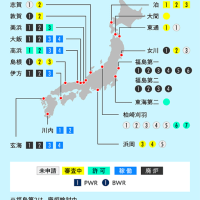
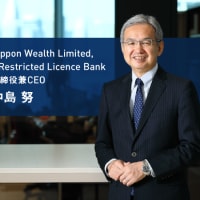
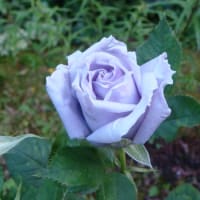
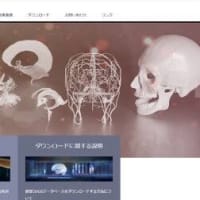
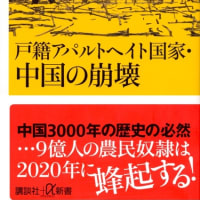
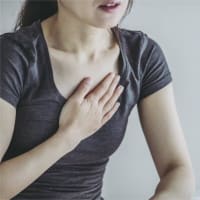
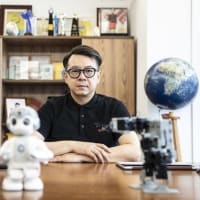

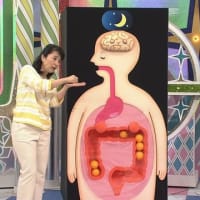
※コメント投稿者のブログIDはブログ作成者のみに通知されます